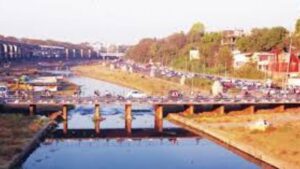Ultimate Guide to Trekking in Pune: Explore Historic Forts and Lush Trails
Overview
The lush Sahyadri mountain range surrounds Pune, Maharashtra, India, offering many exciting trekking options. Pune, known as the “Oxford of the East” for its intellectual institutions and vibrant culture, also attracts nature lovers and adventurers with its natural splendor.
Hikers who want to see the Western Ghats will love Pune’s craggy hills, lush trees, and flowing waterfalls. Due to its many forts, peaks, and routes, Pune offers hiking opportunities for beginners and experts.
In addition to climbing mountains, Pune trekking lets you discover its rich history and culture. Forts and hill stations treks near Pune are historically significant since they were military defenses during Indian history. These old routes lead hikers across time and magnificent scenery to stories of bravery, victory, and resiliency.
Popular Pune Treks
Pune boasts many historic, scenic, and adventurous walking paths. Some popular local hikes:
A. Trekking the Sinhagad Fort
Sinhagad Fort is located on a hill to the southwest of Pune and it has an intriguing history as well as amazing views. The journey to Sinhagad takes you past temples, ancient buildings, and dense foliage. Gates, bastions, and fortresses display Sahyadri views for trekkers.
B. Rajmachi Fort Trek
Rajmachi Fort is nestled in rocky Western Ghats known for its twin peaks with beautiful surroundings. The trip to Rajmachi consists of lovely villages, gushing streams, and lush woods representing rural life’s picture show. The temple is at the fort along with historical structures, caves, and Sahyadri mountain views.
C. Lohagad Fortress Tour
Lohagad Fort near Lonavala offers exciting trekking experiences and has a rich cultural heritage. The hike up Lohagad includes breathtaking lake and valley views through thick forests, and rugged terrain over ancient stairways. Find out about the fort’s defenses, tunnels, and water tanks which illustrate its history.
D.Trekking Tikona Fort
Tikona Fort Maval is famous for its triangular shape and the scenic beauty it provides. After slowly moving through rocky area-covered forests, Tikona presents beautiful Pawna Lake as well as Sahyadri mountains panoramas. Nature can be enjoyed by observing various temples, cells or forts while trekking through them.
Trekking Essentials
To ensure your safety and enjoyment, you need to be ready before going on a hiking expedition in Pune. This comprehensive guide covers the basics of trekking:
A. Travel Planning
- Hiking trails around Pune require official permission or consent from landowners. Study and obtain permits before embarking on a hike.
- Bring comfortable clothing, strong hiking shoes, a map, compass, or GPS, a backpack with water and snacks, a first aid kit, and a knife; winter and monsoon trips need extra clothes plus rain gear.
- Selection of walks according to fitness levels can help choose appropriate treks. Pre-walk exercises will tone muscles and increase stamina. Drink water then rest.
B. Safety Rules
- Check weather forecasts before your trip and be prepared for possible changes while on the move. Avoid climbing in extremely hot conditions, dry spells, or thunderstorms.
- Carry an elaborate trekking map that shows positions as well as trail marks. Navigation through GPS or smartphone apps should not make you forget about maps.
- Discover emergency procedures of local police agencies as well as EMTs’ office numbers including hospital helplines. Talk to relatives about your hiking program and have them periodically check on you.
C. Nature’s No-Trace Policy
- To reduce environmental impacts, you must always leave no traces. To avoid dangerous plants and follow routes, clear debris.
- All waste must be bagged, including compostable items such as food scraps and toilet paper. Dispose of trash in its proper location.
- For the safe, responsible, and responsible exploration of Pune’s beautiful landscapes, please follow these hiking instructions.
Tips for a Great Hike
Adventure in Pune has some amazing trips, culture, and wildlife. Mud maps for a nice walk:
A. Trek Selection
Choose a walk that matches your fitness and hiking skills, choose lesser challenging walks for beginners while others should take tougher ones. Check path: List the trek’s length, geography, and difficulty; height gain, trail conditions, and weather must be taken into account before deciding.
B. Logistics Organization
You could book hotel accommodation if you are planning to stay overnight as well as transportation to the starting point of the hike. Homestays, guesthouses, and campsites near trekking areas are there for choices. Hire a guide from the vicinity or team up with other hikers if you do not know how to find your way around safely
C. Enjoying Regional Culture
Trekkers should respect local customs and religions; Respect locals and obtain permission before approaching private or sacred places Honour wildlife habitats and minimise environmental harm through elimination of garbage, safeguarding of environment observing camping and cooking restrictions
D. Trip enjoyment
Walk in beautiful scenery Consider beauty with its wildlife together with the sounds of forests Hike weather, path, and logistics may change – be flexible enough to enjoy the trip- difficulties could turn out to be rewarding
In summary
When trekking in Pune you get to see historical monuments and the natural beauty of the Western Ghats. There are green valleys and ancient forts for us to explore on Pune’s trekking routes. In conclusion, let our guide end with a list of different hiking sites in Pune that should get tourists excited.
Pune has several attractive footpaths that crisscross its terrain. From serene hideaways in forested hillsides to wide-ranging vistas from old fortresses, there is something for everyone in Pune.
In general, anyone can have a chance to visit Pune. Dare yourself and go beyond your comfort zone as you appreciate nature. Our every walk will reflect our determination, inquisitiveness, and passion for plants’ living organisms.
We must practice environmental integrity by gently treading and leaving no trace behind as conservationists. By respecting local traditions and culture while not leaving any traces behind we can still leave beautiful landscapes of Pune for future generations too.







